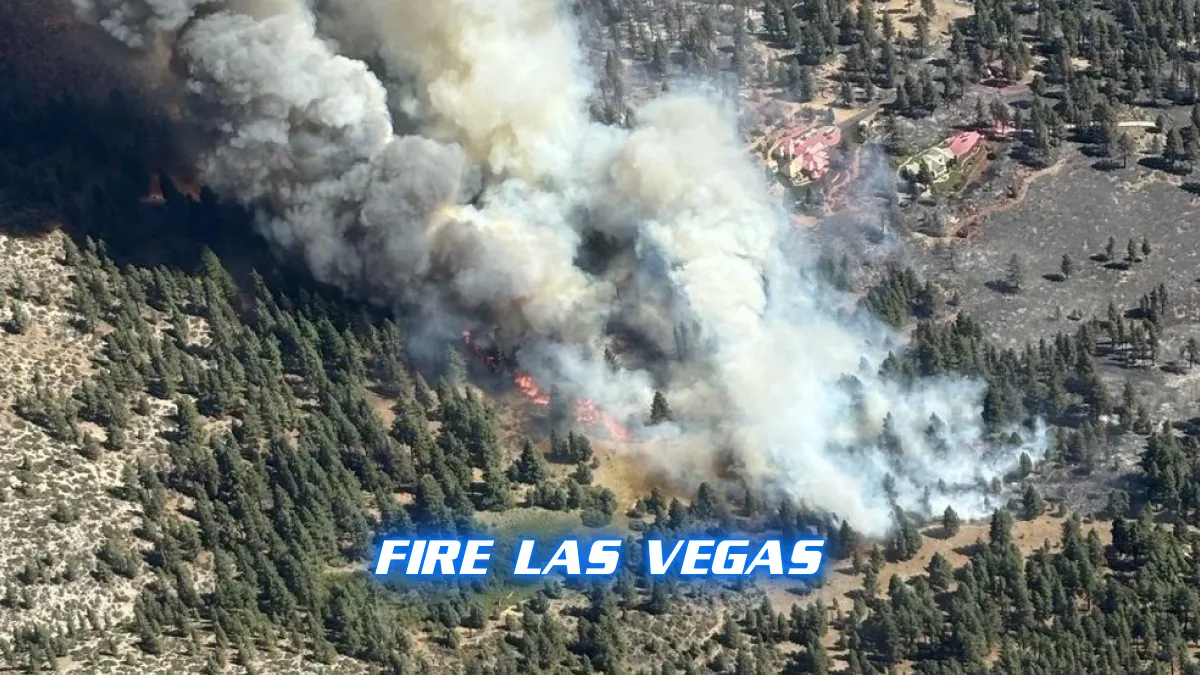A team of skilled firefighters from the Las Vegas area has been dispatched to assist in battling the rapidly spreading Davis Fire, which has scorched thousands of acres south of Reno, Nevada. The strike team, comprising 34 dedicated firefighters from Clark County, Las Vegas, Henderson, and North Las Vegas, is part of a coordinated effort to control the blaze as it threatens nearby communities.
Clark County Sends Firefighters to Aid in Davis Fire Response
As of Wednesday morning, a team from Clark County’s fire department was mobilized to Washoe Valley, where the Davis Fire has been raging since early September. Clark County officials confirmed the deployment, which includes four fire engines and a total of 18 personnel. Among those deployed are a fire chief and a skilled mechanic to ensure that firefighting equipment remains operational during this critical mission.
This reinforcement effort comes at the request of the Nevada Division of Emergency Management, which has been managing the fire response across Northern Nevada. Local fire crews have been stretched thin as they combat multiple wildfires in the region, prompting the need for additional resources from Southern Nevada.
Las Vegas and Surrounding Cities Join Forces
In addition to the Clark County fire department, Las Vegas Fire & Rescue, Henderson Fire Department, and North Las Vegas Fire Department have contributed to the strike team. This collaboration highlights the unified approach Nevada’s fire services take when responding to large-scale emergencies. The deployment of this strike team underscores the state’s readiness to come together in times of crisis, pooling resources and expertise to protect lives and property.
Davis Fire: A Growing Threat in Northern Nevada
The Davis Fire has burned through nearly 5,600 acres as of Tuesday night, according to the U.S. Forest Service. Although containment efforts have made some progress, with 31% of the fire under control, the situation remains volatile. The fire continues to spread due to dry conditions and shifting winds, raising concerns for the safety of nearby residents and wildlife.
Evacuations have been ordered for several homes in the fire’s path, and additional communities are on high alert, with warnings issued to residents in surrounding areas. Firefighters on the front lines are working tirelessly to create firebreaks, control flare-ups, and protect vital infrastructure from the advancing flames.
The Importance of Mutual Aid in Firefighting Efforts
The deployment of a strike team from Las Vegas to Northern Nevada exemplifies the importance of mutual aid in firefighting operations. As fires become more frequent and intense due to climate conditions, firefighting agencies across the country are increasingly relying on one another to manage large-scale wildfires. Mutual aid agreements allow fire departments from different regions to share resources, personnel, and equipment, ensuring a more robust and coordinated response to emergencies.
In the case of the Davis Fire, firefighters from both Northern and Southern Nevada are working in tandem to contain the blaze. This cooperative approach not only boosts manpower but also brings together a wide range of expertise, as each team member contributes unique skills and knowledge to the firefighting effort.
Challenges Faced by Firefighters in Northern Nevada
Fighting a wildfire of this magnitude is no easy task. The Davis Fire has presented numerous challenges to fire crews, from treacherous terrain to unpredictable weather conditions. The region’s mountainous landscape makes it difficult for ground crews to access certain areas, while strong winds can quickly change the direction of the fire, putting both firefighters and residents at risk.
Additionally, the dry, hot climate of Northern Nevada has created the perfect conditions for the fire to spread. Firefighters must contend with the risk of embers igniting new fires, which can exacerbate an already difficult situation. Despite these challenges, the combined efforts of local and deployed teams have managed to slow the fire’s progress, providing a glimmer of hope for full containment in the days to come.
Protecting Communities and Preserving the Environment
As the Davis Fire continues to burn, the priority remains the protection of human lives and property. Firefighters are focused on preventing the fire from reaching populated areas while also working to preserve natural habitats that are home to various wildlife species. Every effort is being made to minimize the environmental impact of the fire, though the destruction of thousands of acres of land has already left its mark on the region.
Evacuation orders are being strictly enforced to ensure the safety of residents, and officials are urging those in warning zones to remain vigilant and prepared to evacuate if necessary. Community shelters have been set up to assist displaced residents, providing them with temporary housing and essential services until it is safe to return home.
Conclusion: A Unified Effort in the Face of Adversity
The deployment of the Las Vegas firefighter strike team to assist in the Davis Fire response is a testament to the strength of Nevada’s emergency management systems. As firefighters from different regions come together to combat the blaze, their coordinated efforts are helping to protect communities and limit the damage caused by the fire. The battle against the Davis Fire is far from over, but with continued collaboration and determination, there is hope that the fire will soon be brought under control.
In the coming days, residents of Northern Nevada will continue to rely on the bravery and expertise of the firefighters on the ground. With the support of the Las Vegas team and others, the community can remain hopeful that the Davis Fire will be extinguished, and the recovery process can begin.

















